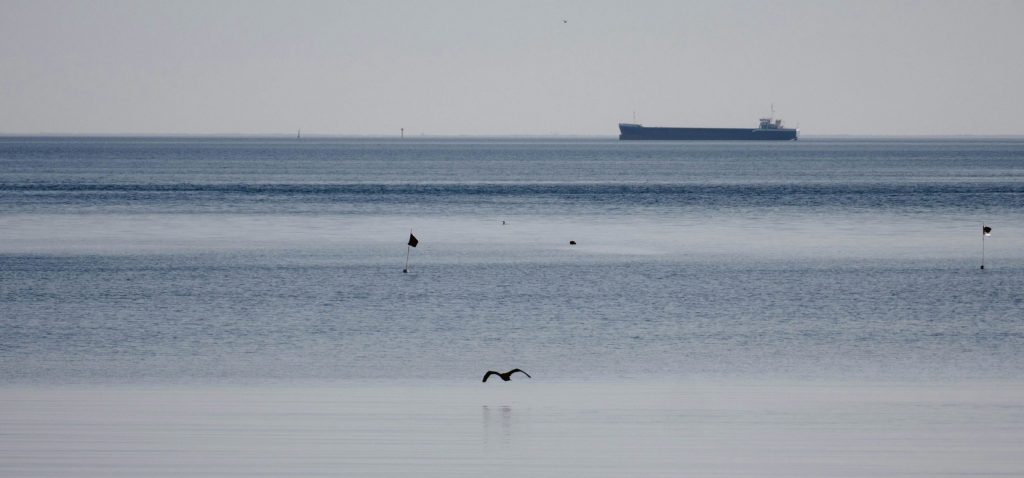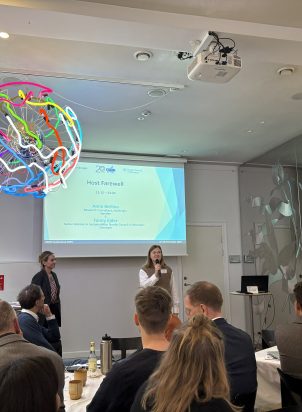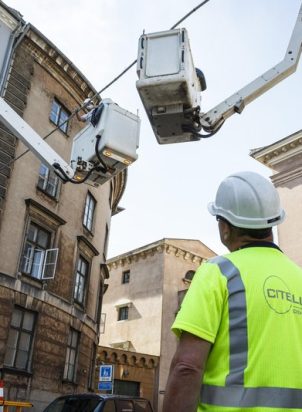How can the Nordic-Baltic region enhance digital security during times of geopolitical instability? In the first of Nordregio’s NB-Connect event series, experts gathered to discuss strategies for strengthening digital resilience and safeguarding connectivity infrastructure in the Nordic-Baltic region.

Photo: Krzysztof Kowalik / Unsplash.com
The physical threat to a digital world
In the face of a changing geopolitical climate, European countries are raising their guards and shining the torch on vulnerable critical infrastructure. The Nordic and Baltic states are currently scrutinising their vulnerabilities to hybrid attacks, particularly following recent incidents involving communication cables in the Baltic Sea. These attacks have highlighted the need to monitor and protect communications systems, reminding us that digital security is highly reliant on physical infrastructure. But security challenges span further than human induced incidents, where remote regions, such as Greenland, face challenges in securing essential communication infrastructure due to harsh arctic environments and a lack of private investment incentives.
To address the pressing issue of secure digital infrastructure, Nordregio recently gathered experts from the NB-Connect expert group, as well as associated national representatives and members of the research community.
This online event marked the first in a series within the NB-Connect project, funded by the Nordic-Baltic Ministers for Digitalisation in their commitment to making the Nordic-Baltic region the most digitally integrated in the world by 2030. The research project focuses on sharing digital connectivity data across the Nordic-Baltic region, and the first event on 18 March particularly covered security threats to communication systems, how these threats differ between regions, and the complexities of covering hybrid threats under international law.
Cecilia Leveaux from the Nordic Council of Ministers emphasised the importance of both access to, and the security and resilience of, the digital infrastructure:
“It impacts everything and is a hot topic in the ministerial councils and Nordic-Baltic collaboration.”
Through discussion with the participants, this event further explored how heightened security concerns may affect transparency practices as well as cross-regional collaboration and data exchange – three elements crucial for the project’s Nordic-Baltic 5G Data Hub, gathering 5G coverage data and use cases in a platform for knowledge exchange across the region.
Future-proofing submarine cables
Following repeated incidents involving critical communication infrastructure, the submarine cable linking Latvia and Sweden was damaged in January 2025. At the event, Evijs Taube, Member of the Management Board at Latvia State Radio and Television Centre (LVRTC), shared insights into the cable’s monitoring operation and the coordination between the Latvian and Swedish Navy to respond to the incident.
“Each disruption reduces the capacity and resilience of the entire network, thus it should be restored as soon as possible”, Evijs Taube said, highlighting the vulnerability of communication networks with limited submarine cables between the Baltics and Sweden. Future-proofing cables will require inter alia deeper burial, raising installation costs, but emerging solutions such as international collaboration and new technologies offer hope for cable security.
International law: More than piracy and warfare?
Jason Halog, Research Associate at the German Aerospace Centre, Institute for the Protection of Maritime Infrastructures and PhD candidate at the University of Hamburg, discussed the challenges in protecting critical infrastructure under international law, based on a recently published paper. With over 1.4 million kilometers of submarine cables globally, covering 95% of worldwide data traffic, Halog emphasized the limited national jurisdiction within the exclusive economic zone and the high seas. While the International Peacekeeping Law and the International Law of the Sea give states the mandate to take measures against piracy and armed attacks by other states, there is limited support to address recent incidents involving damage to critical maritime infrastructure.
“Protection of submarine infrastructure is critical, yet international law is limited in its ability to address these attacks,” says Jason Halog noting that there is a need for universal jurisdiction to include submarine infrastructure, for example, by developing new international conventions to address submarine infrastructure protection specifically.
“Protection of submarine infrastructure is critical, yet international law is limited in its ability to address these attacks”
Vulnerability of Arctic regions
Hybrid threats are not the only security risks to digital infrastructure. Increasingly, “hyper scalers” like Meta and Google are taking larger shares of transatlantic cable ownership. However, remote regions with less business incentive for private infrastructure expansion have fewer economic interests in developing communication infrastructure and less access to repair services in case of cable damage. Furthermore, remote arctic regions, such as Greenland, face additional challenges due to harsh weather conditions.
Dr. Signe Ravn-Højgaard, Director at Tænketanken Digital Infrastruktur (DNK), argues that digital infrastructure in the Arctic can be seen as a “Canary in the Coal Mine” when it comes to how interconnected modern society is and thus how profound the consequences of internet blackout are. She highlights the vulnerabilities of remote communities lacking business cases for private investment and facing prolonged repair times. The high cost of connecting small, isolated societies via submarine cables and the high costs of prolonged outages have led Greenland’s telecommunication sector to explore different satellite solutions, such as Starlink satellites. To prevent market dominance and reliance on a single provider, Ravn-Højgaard emphasises the importance of seeking additional fiber cable and satellite partnerships with European and Nordic-Baltic actors.
(For more information, please check the publication “Gateways: Comparing Digital Communication Systems in Nordic Welfare States”.)
Look to the future
The insights from Nordregio’s event will feed into a discussion paper on security concerns and monitoring challenges for digital infrastructure, set to be published in the summer. Plans are already underway for the next seminar, which will focus on the socioeconomic aspects of rural smart communities. This seminar will draw on an upcoming report exploring relevant indicators for social impact assessment of improving digital connectivity in rural areas in the Nordic region.
Dig deeper into the security challenges of digital communication in the upcoming paper and in the linked reading, and stay tuned for more project insights by subscribing to Nordregio’s newsletter.

Photo: Kabiur Rahman Riyad / Unsplash.com






